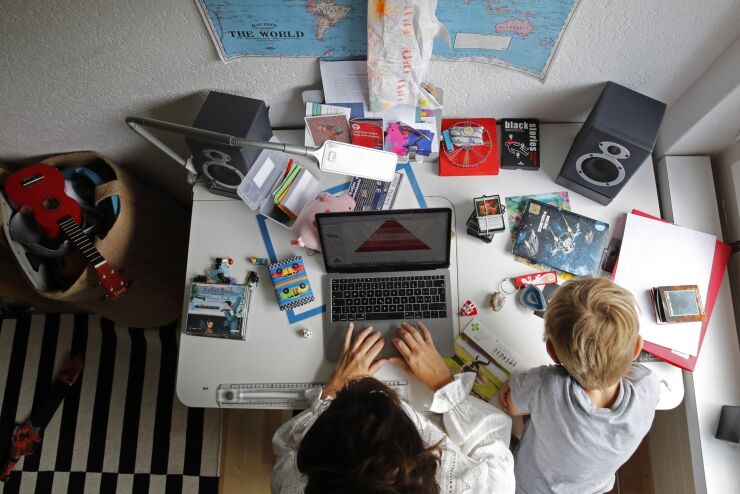As word of “The Great Resignation” began to reverberate among employers earlier this year, something interesting happened. Even as female workforce participation hit its lowest level since the 90s, we began to hear from employers that they wanted to make a conscious effort to hire more women — and mothers in particular.
It’s an initiative that is much needed: over
As much as COVID laid bare the incredible inequities that working mothers face, it also created an inflection point. Working mothers have the attention of the world, and they’re demanding more. And employers — with a look behind the curtain at the load that women bear at home and work for perhaps the first time ever — are listening and want to make changes.
Read more:
This instinct is a good one. Employing women has a tangible impact for their companies. A study by Goldman Sachs showed that companies that employ female leaders outperformed those with predominantly male leaders by 2.5% per year. A
But, it’s not enough to simply declare your business family-friendly, or even to consciously decide to hire more women or working mothers. To succeed at creating a workplace that truly works for mothers, where they want to stay and where companies can reap the benefits of this loyal, high-performing workforce, employers need to develop a retention and engagement strategy that goes beyond attraction and digs deeper into culture in a meaningful way. This requires leadership buy-in and a process in place to create and measure success.
The tide has shifted towards creating a workplace that works for mothers, but the opportunity won’t last forever.
The Post-Pandemic Landscape for Employers
The Great Resignation has indeed come to fruition, with a recent
Read more:
For employers who are unwilling to be flexible, working mothers are leaving for new employers who will be — and many others are simply leaving the workforce for the time being. We are seeing women choose to take a pay cut to avoid dealing with the immense stress of a job without flexibility, consistent with reports that 65% of Americans would take reduced wages to work remotely.
Meanwhile, the value of women is increasingly acknowledged by employers. Women bring diverse opinions and new approaches to the table. In their role as mothers, they’ve gained valuable experience in multi-tasking, communicating, diplomacy and problem-solving.
Employer Action Plans
Employers are being faced with how to reimagine the future of their workplaces to attract and retain working mothers. Talk will not be sufficient: employers need an action plan, buy-in from leadership and metrics by which to measure their success.
For employers thinking about where to start, other countries, our federal government and mothers themselves have demonstrated a number of strategies that work. Generous pay and time off for sick leave is incredibly popular in countries with high rates of working mothers. In Sweden, for example, employees are entitled to 90% of their pay while sick for up to 52 weeks. More than
We also hear specific needs from working mothers who are part of our candidate pool. They look for companies with greater flexibility to work in off-hours so they can meet family demands, and for companies that are committed to equitable pay and closing the pay gap. They also are often open to switching fields, and look for companies willing to train them in those new career paths. Working mothers want certainty about job expectations and performance standards, and they want employers to communicate them promptly to alleviate worry. These are actionable, specific steps that employers can implement to be more family-friendly.
The
The quandary for many employers is how to tap the skills of working mothers while ensuring productivity. This requires a shift in employers’ mindsets from evaluating their employees by monitoring them directly to gauging their performance based on what they accomplish. Advancements in digital technology provide many solutions for employers such as defining key performance indicators, creating milestones, creating visibility, and tracking time and goals.
Read more:
It’s fair to say that employers are at a tipping point. Businesses need the skills of working mothers to take their operations to the next level and solidify success. All too often, employers have overlooked the needs and challenges of working mothers. It took a global pandemic for employers to see the light.
With countless studies supporting the reality that employers have seen before them for the working mothers in their midst, this is truly an opportunity to make history and change the workplace for women for generations to come.






